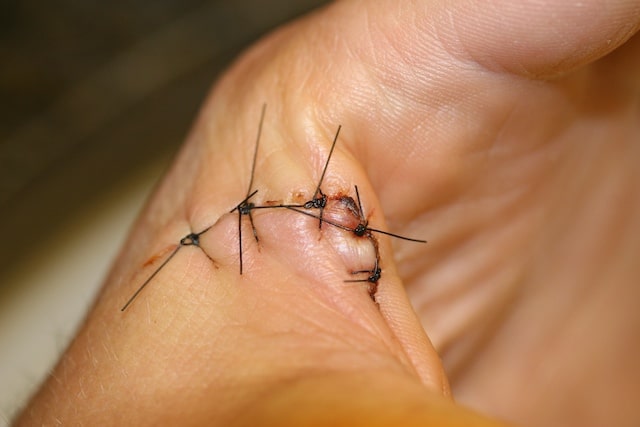Sutures Removal at Home in Dubai, also known as stitches, play a crucial role in wound healing by holding the edges of a wound together until it heals. While the thought of removing sutures at home might seem convenient, it's essential to consider the safety implications associated with this practice.
Understanding Sutures
Before delving into the safety aspects, it's important to understand what sutures are and their role in the healing process. Sutures are medical stitches used to close wounds and promote healing. They come in various types, including absorbable and non-absorbable, and are selected based on factors such as wound location and type.
The Healing Process
Wound healing is a complex process that involves several stages, including inflammation, proliferation, and remodeling. Sutures aid in this process by holding the wound edges together, facilitating proper alignment and minimizing scarring.
When are Sutures Removed?
Typically, sutures are removed once the wound has sufficiently healed, which can vary depending on factors such as wound location, depth, and the individual's healing capacity. Healthcare providers assess the wound's progress and determine the appropriate time for suture removal, usually within 5 to 14 days post-injury or surgery.
Risks of Home Suture Removal
While removing sutures at home might seem like a cost-effective and convenient option, it poses several risks. Improper technique or tools can lead to wound dehiscence (opening), increased risk of infection, and scarring. Additionally, attempting suture removal without proper training or guidance can result in pain and discomfort.
How to Remove Sutures Safely
If suture removal at home is deemed necessary, it's essential to follow proper technique to minimize risks. Here's a step-by-step guide:
- Gather Supplies: Ensure you have clean scissors or a suture removal kit, tweezers, and antiseptic solution.
- Prepare the Area: Wash your hands thoroughly and disinfect the wound area with antiseptic solution.
- Remove Sutures: Using clean scissors or a suture removal kit, carefully cut each suture close to the skin's surface.
- Extract Sutures: Use tweezers to grasp the suture's knot and gently pull it through the skin.
- Clean and Dress Wound: After all sutures are removed, clean the wound again and apply a sterile dressing if necessary.
Signs of Infection
It's crucial to monitor the wound for signs of infection, which include redness, swelling, warmth, pus drainage, and increasing pain. If any of these symptoms develop, seek medical attention promptly.
Benefits of Professional Suture Removal
While home suture removal might seem tempting, seeking professional assistance offers several advantages. Healthcare professionals have the expertise to assess wound healing progress accurately and remove sutures safely, reducing the risk of complications such as infection and improper wound closure.
Patient Education
Patients should receive thorough education on wound care, including instructions on recognizing signs of infection and when to seek medical help. Sutures Removal at Home Dubai Addressing concerns about suture removal and emphasizing the importance of following healthcare provider recommendations can enhance patient compliance and outcomes.
Conclusion
In conclusion, while the idea of removing sutures at home might be appealing, it's essential to prioritize safety and follow healthcare provider recommendations. Improper suture removal can lead to complications and hinder the healing process. By understanding the risks involved and seeking professional assistance when needed, individuals can ensure optimal wound care outcomes.





Comments